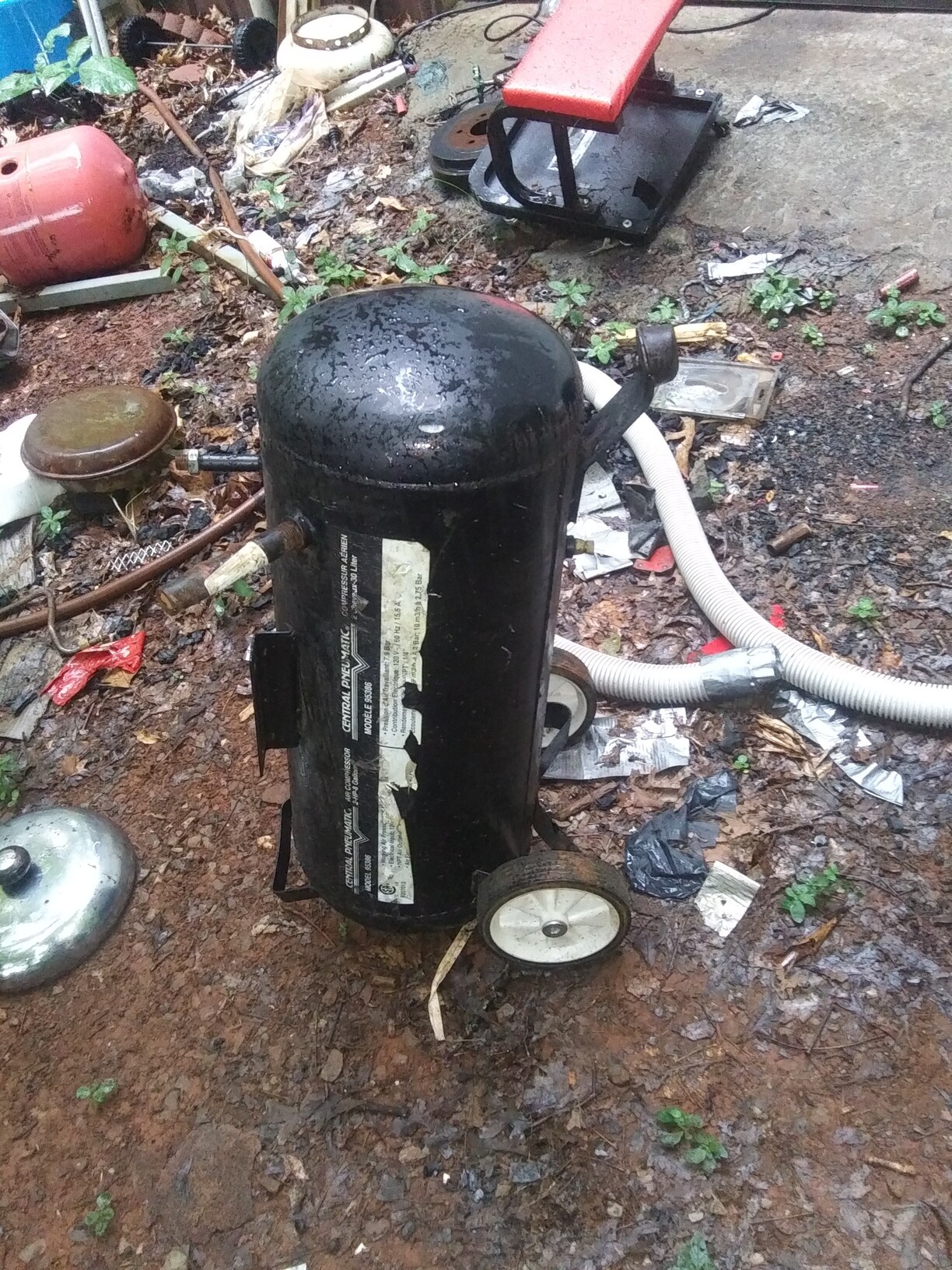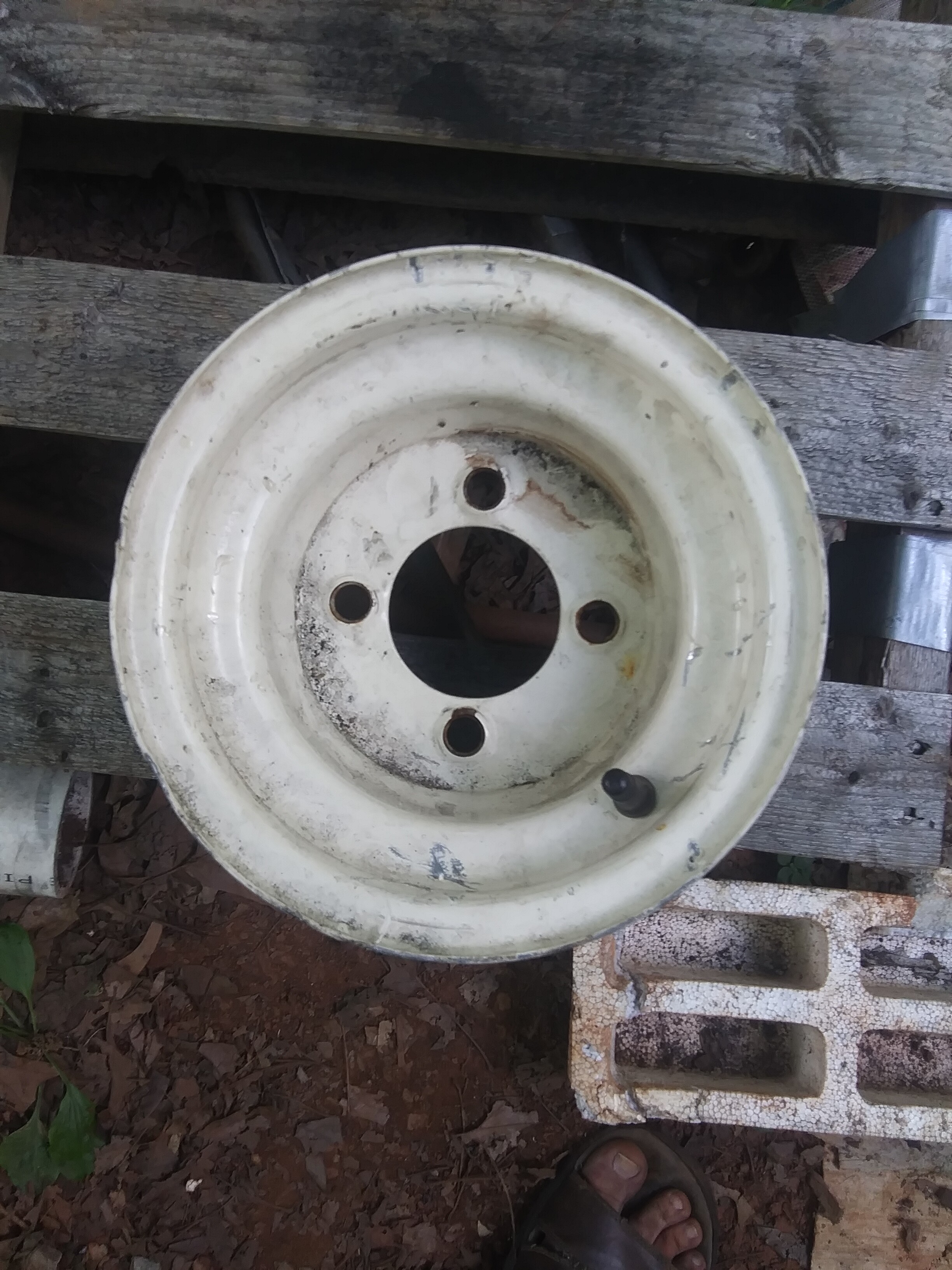Making a new topic so I can keep my thoughts in a semi orderly manner. After looking at JO’s build in his Mazda and his old Rabbit reactor as well as Jan’s reactor for his S-10 I’ve been shown it’s not impossible to keep a small form factor. I have a roughly 10" OD air compressor tank, a few 20lb propane tanks which are 12" ID, the car rim that I have already cut to fit propane tanks, my 20 gallon drum, and the two pairs of brake drums that I’ve been able to take home.
While the idea of a grateless system sounds exciting it’s entirely foreign to me as a concept. I know JO and Jan really like those systems and seems to work well for them.
The only things that I am absolutely certain of is to make a heat exchanging air jacket using the air compressor tank as the burn tube, and the propane tanks nested over. I have metal band strap material and I have worn out steel cutting bandsaw blades. The other item I’m positive of is utilizing a brake drum system on the bottom end.
If I were to build this grateless I would use a propane tank as the base and cut the disc portion from one of the brake drums.
I could also go to the scrapyard and try to find another intact 20 gallon drum and go with a self repairing angle iron swinging grate. From what I understand, Max Gasman shows a bird cage shape as the whole grate.
The car rim mates up perfectly with a 20 gallon drum and has a nice rounded shoulder, if I cut the burn tube to fit precisely in the propane tank then it would leave a mound to sit proud inside the car rim, which would give me a good condensate gutter. I really like Joni’s condensate exhaust venturi so I would be tempted to use that.
The vehicle this would be intended for is my Mazda.
The smaller brake drums already have a 3 inch center hole which sounds about right for the little 2 liter engine. JO used a 3.5" choke hole with his 2600cc engine so I’m in the ballpark.
I would be missing a step in some pre heating if I go grateless, heating incoming air from exiting gas, but I can make up for that with a drop box exchanger.
A lot of guys seem to have had luck with 7 nozzles and sources like Peterson’s book show 7 nozzles sounds about right. I will be welding in couplers to the burn tube so I can change out nozzles for repairs.
My main criteria is to not use up another 55 gallon drum because I am saving my last two for a WK. Same goes for my hot water heater tank.
I know I’ll have to use a small fuel size because the burn tube is relatively narrow being just under 10" on the outside.
Nothing has been welded together and only two cuts have been made that make sense.






